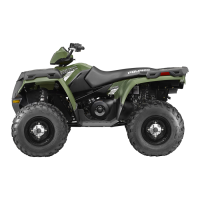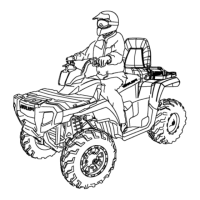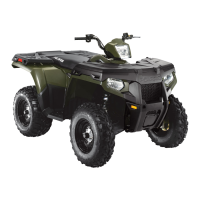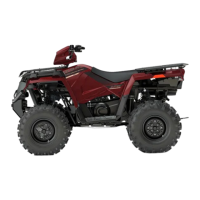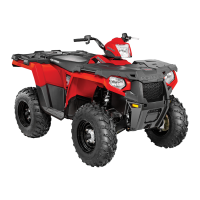Disc brake systems are light weight, low maintenance, and perform well in the conditions ATVs routinely en-
counter . There are a few things to remember when replacing discbrake padsorperformingbrake systemser-
vice to ensure proper system function and maximum pad service life.
S Optionalpadsareavailabletosuitconditionsinyourarea. Selectapadtofitridingstyleandenvironment.
S Do not over-fill the master cylinder fluid reservoir.
S Make sure the brake lever and pedal returns freely and completely.
S Adjust stop pin on front caliper after pad service.
S Check and adjust master cylinder reservoir fluid level after pad service.
S Make sure atmospheric vent on reservoir is unobstructed.
S Test for brake drag after any brake system service and investigate cause if brake drag is evident.
S Make sure caliper moves freely on guide pins (where applicable).
S Inspect caliper piston seals for foreign material that could prevent caliper pistons from returning freely.
S Perform a brake burnishing procedure after installing new pads to maximize service life.
BRAKES
9.2
BRAKE SYSTEM SERVICE NOTES
BRAKE PAD
KITS
NOTE: Brake pad part numbers are stamped onthe back of thepad foridentification purposes.This partnumber
cannot be ordered -- it is included in the chart for reference only. Part numbers on the following chart may
change or supercede to a new number. Always refer to the current parts manual for part numbers.
Part No. Type Description
2201398 - Kit Std Front brake pad kit. (Contains 4 pads PN
1910333)
2201399 - Kit Std Rear brake pad kit.

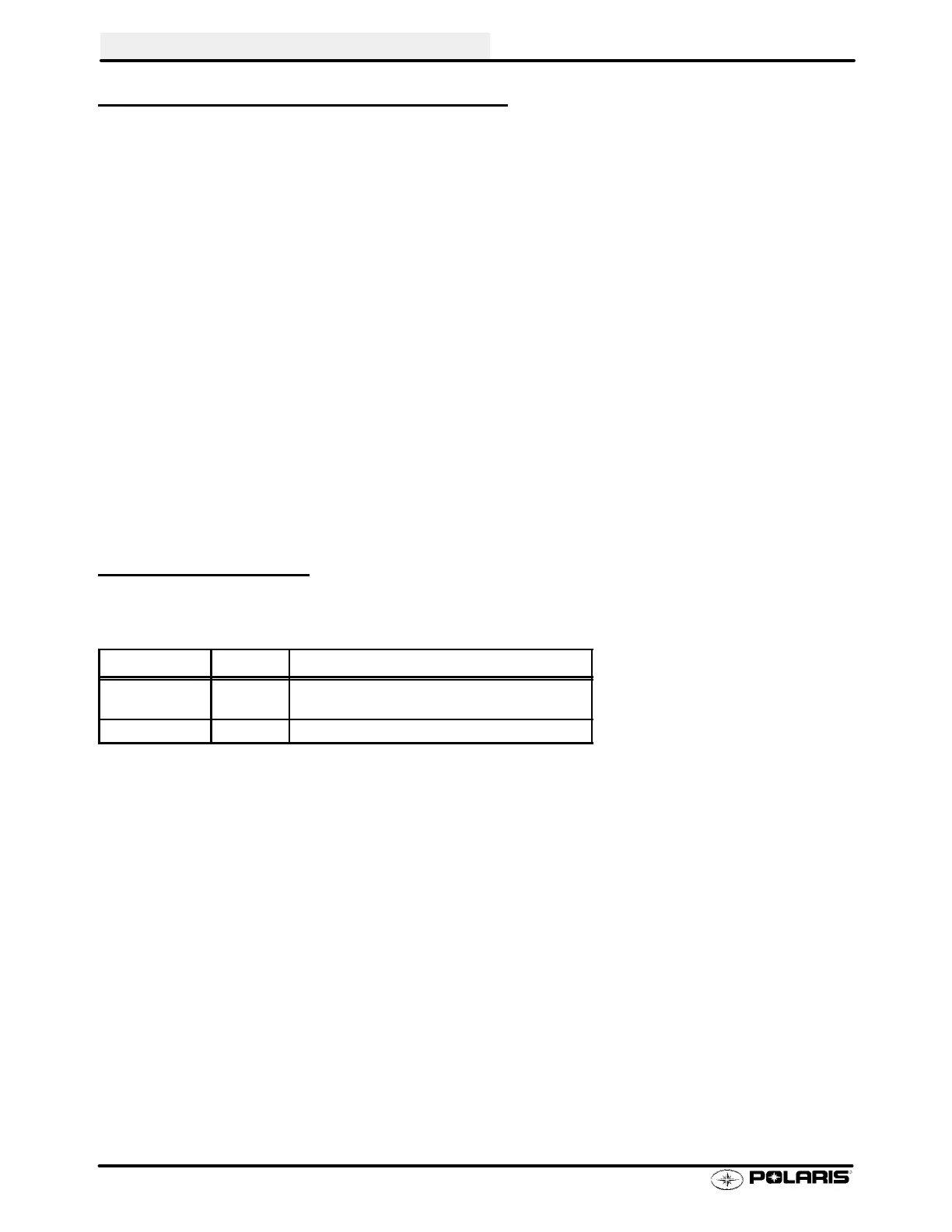